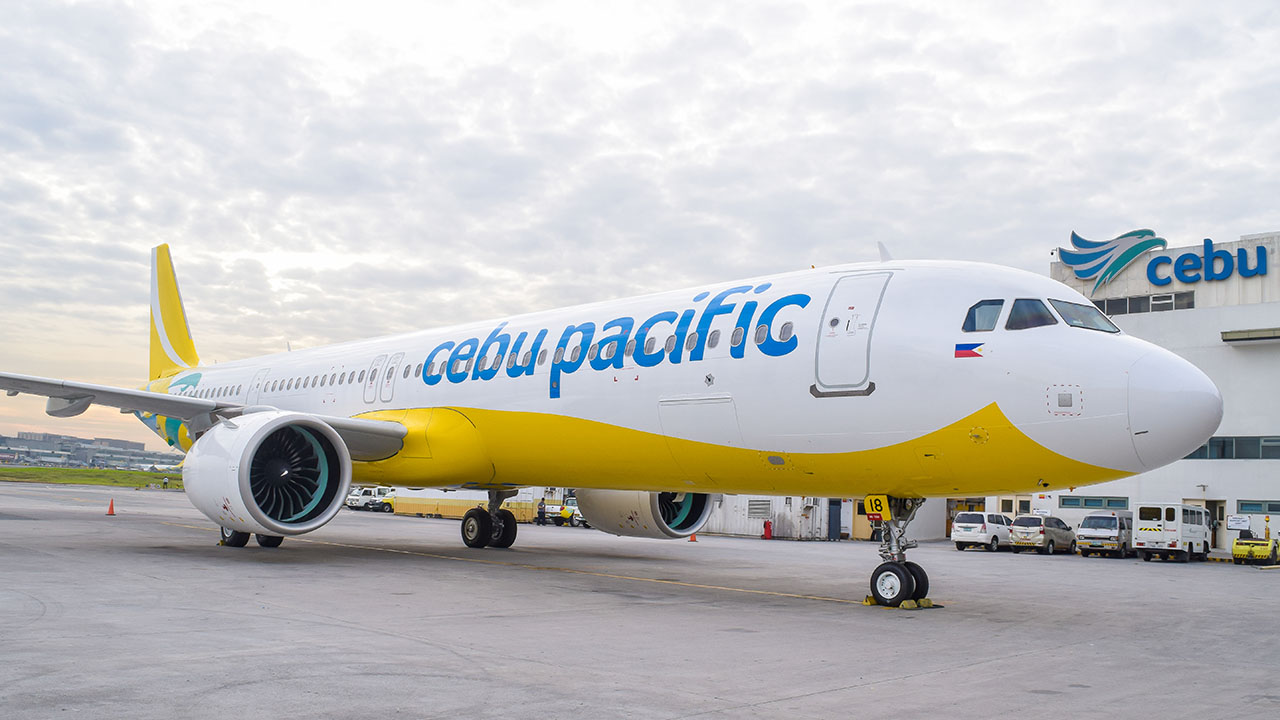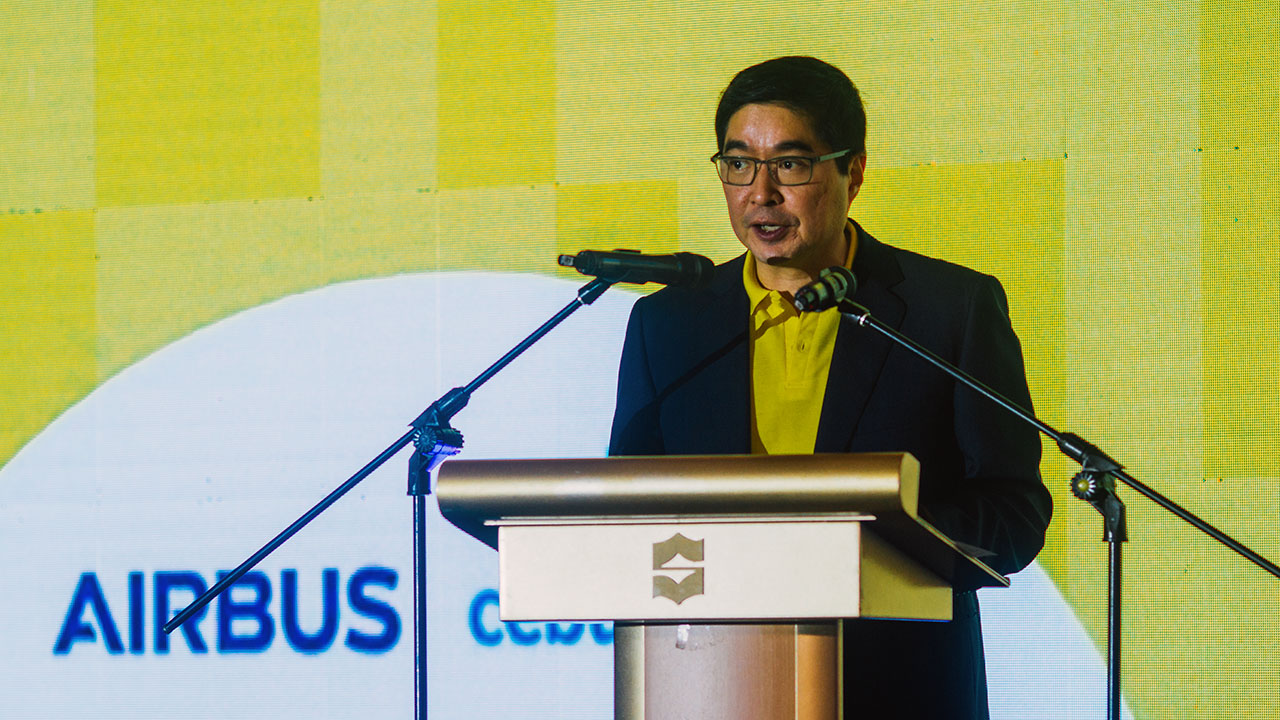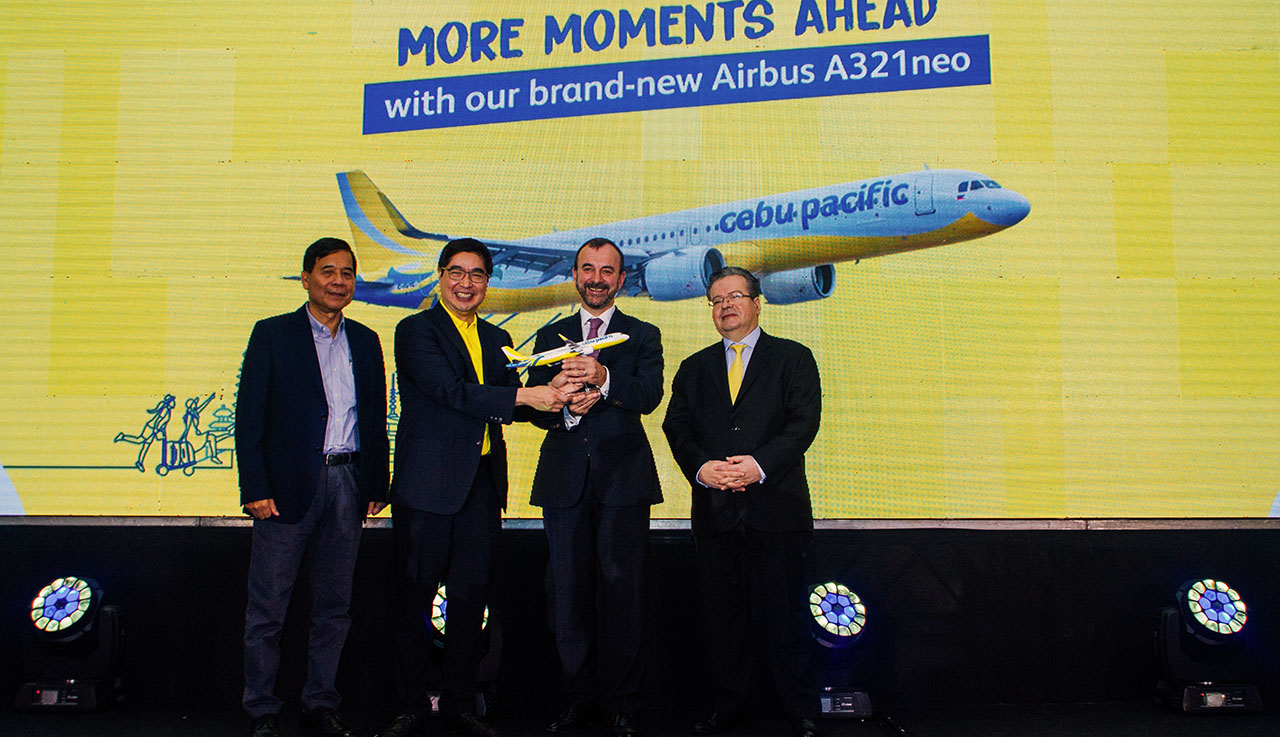As of December 31, 2018, the average age of the Cebu Pacific fleet was 5.06 years, or five years and three weeks. In comparison, the average fleet age for carriers in Asia is 9.7 years, while in the United States it’s an even more mature 14.1 years. While it doesn’t necessarily mean that older planes aren’t air-worthy—that largely depends on the carrier’s maintenance standards—the related costs, such as obtaining spare parts and the constant refurbishing needed, eventually add up.
For Cebu Pacific (CEB), the bottom line wasn’t the only consideration for its massive refleeting program. By investing in new aircraft, it could promise its passengers greater comfort, better onboard technology, and quieter flights.

The latest aircraft to arrive in the midst of Cebu Pacific’s aggressive expansion is the highly lauded Airbus A321neo (New Engine Option). It is the first of 32 A321neos ordered by Cebu Pacific. To mark this milestone, Cebu Pacific hosted a gathering of its partners in Airbus and key stakeholders in the aviation industry where details of the new acquisition were revealed, and the state of the industry was discussed.
Out with the old, in with the new
Since commencing operations in 1996, innovation and expansion have always been CEB’s game. Dramatically changing the Philippine aviation landscape, CEB President and CEO Lance Y. Gokongwei shared a glimpse into the remarkable growth of the airline since operations began in March 1996, “From a mere 400,000 passengers flown in 1996, we flew close to 20 million passengers in 2017. Passenger traffic took off sometime in 2005, when Cebu Pacific shifted from full-service to a low-cost carrier making air travel more accessible to a greater number of Filipinos.” He continued, “From just a handful of big cities, air travel was made available to other destinations, connecting our islands and cutting travel times. The first 22 years of Cebu Pacific were marked by aggressive expansion, opening up markets to new places around the Philippines. But as we enter our 23rd year of existence, it’s time to set the stage for the next chapter in Cebu Pacific’s growth story.”

To make way for the new aircraft deliveries, Cebu Pacific has been retiring some of the workhorses in its stable. “In 2018, the last of our Airbus A319 aircraft exited the CEB fleet. For over a decade, the Airbus A319 has propelled our expansion in key domestic and international markets. But re-fleeting was a necessity to ensure operational efficiency and harness growth potential that takes into account aircraft arrivals and our network plan,” said Mr. Gokongwei.
The newly delivered A321neo is closely related to the seven A321ceos currently in the Cebu Pacific fleet, but boasts a new cabin configuration, enabling more passenger seats, and comes fitted with quieter and more efficient engines. According to Airbus Executive Vice President for Sales in Asia Jean Francois Laval, “The A320neo (new engine option) is one of many upgrades introduced by Airbus to help maintain its A320 product line’s position as the world’s most advanced and fuel-efficient single-aisle aircraft family.”
Mr. Gokongwei reveals that the aircraft’s arrival could not have come at a better time, as demand from passengers continues to outpace airport slot capacity. “The A321neo offers 236 seats—56 more seats, or 31% more capacity, using the same slot—versus the Airbus A320. This allows us to increase seats using the same frequency, using the same airport slot. Equipped with Airbus Cabinflex, CEB’s A321neo makes the most of passenger capacity and maximizes utilization of precious airport slots.
Powered by the Pratt & Whitney PW1100G-JM engine, the A321neo is capable of flying up to 5,000 km. or seven hours flying time. Thanks to the extended range, the possibility of Cebu Pacific flying to new and farther destinations is just over the horizon. “With this aircraft, we plan to boost capacity in key destinations in North Asia and Southeast Asia, as well as increase our domestic market share. The A321neo arrivals will also allow us to accelerate expansion by gaining a stronger foothold into China, and developing new routes out of hubs outside Manila such as Clark and Cebu,” explained Mr. Gokongwei. He further revealed that the airline is currently exploring new commercial routes which include India, Russia, Northern Japan, and additional cities in Australia.
 From left: Manuel Antonio Tamayo, DOTr Undersecretary for Aviation; Lance Y. Gokongwei, President and CEO of Cebu Pacific; Jean Francois Laval, Airbus Executive Vice President for Sales in Asia; His Excellency Nicolas Galey of the Embassy of France to the Philippines and Micronesia. IMAGE Cebu Pacific
From left: Manuel Antonio Tamayo, DOTr Undersecretary for Aviation; Lance Y. Gokongwei, President and CEO of Cebu Pacific; Jean Francois Laval, Airbus Executive Vice President for Sales in Asia; His Excellency Nicolas Galey of the Embassy of France to the Philippines and Micronesia. IMAGE Cebu Pacific
With sustainability and concern for the environment being key drivers in many of CEB’s corporate policies and decisions, the Airbus A321neo is a worthy addition to the company fleet. “The A321neo dramatically reduces fuel consumption,” said Mr. Gokongwei. “Over the past couple of days, the A321neo was used for regular flights between Manila and Davao. Data from these flights show that the A321neo burned 1/3 less fuel per passenger compared to our A321ceos. This significant reduction in fuel burn results in consequentially reduced carbon emissions.” Aside from this, the new aircraft promises up to 20% reduction in fuel cost, as well as a staggering 50% reduction in nitrogen dioxide emissions, a leading cause of respiratory problems.
That’s all good for the environment, but the planes will greatly impact CEB passengers as well. Thanks to increased fuel efficiency, they can look forward to increased availability of lower fare options. (Yes, that’s more seat sales coming your way!) The Pratt & Whitney engine’s geared turbo fan reduces noise by up to 75%, giving passengers a more comfortable flight experience, while also reducing noise pollution for communities along the plane’s flight path. In terms of passenger convenience and comfort, Mr. Gokongwei adds, “While seat pitch is still at the standard 28 inches, the award-winning, ergonomic Recaro SL3510 seats we have onboard maximize legroom, and are more attuned with natural sitting positions. To address the trend of passengers watching downloaded video and listening to music from their mobile devices, each seat is now equipped with a USB charging port in front of their seats so they can easily lean their devices on the device slot that is found in each tray table.”
Onward and upward: full speed ahead
At an event marking Philippine Aviation Day in late 2017, Mr. Gokongwei said in his speech, “…aviation is growing not just globally, but particularly in the Philippines, fueled by increasing trade and investment; and demand for passenger travel. In the Philippines alone, at least two dozen new routes have been launched this year; on top of additional frequencies for existing routes. Inbound and domestic tourism continue to be demand drivers for commercial flights—proof of which are the surge of travelers who booked flights over the years and particularly in the coming long weekends.” Continuing his speech at the event’s closing ceremony, where he assumed the chairmanship of the Air Carriers Association of the Philippines, Mr. Gokongwei also noted that “Netizens and local government units continually request Philippine carriers to mount flights to certain destinations—indication of the huge underserved market in the country.”
Fast-forwarding to the present, with its continued fleet expansion, Cebu Pacific is helping address some of these needs. “Despite lingering head winds, such as increasing competition, rising customer expectations, as well as fuel price volatility, and other external risks, we at Cebu Pacific firmly believe that now is the time to expand and harness opportunities. 2019 is the year that we will accelerate growth. We have a total of 12 deliveries this year, or an average of one per month. As always, we will maximize the utilization of this aircraft, putting them into service almost as soon as they arrive, in order to provide our customers with the best available options and the lowest fares,” added Mr. Gokongwei.
For an airline that started its operations just 23 years ago, its ascent to becoming the country’s leading airline has been nothing short of remarkable, hitting milestone after milestone along the way. According to Mr. Gokongwei, its latest might just be around the corner: “We aim to fly our 200 millionth passenger by 2020, and we will do this through continuous improvement in our product offering, as well as our network footprint, as we continue to modernize our fleet to larger and more fuel-efficient, environmentally friendly aircraft.”
In just three years’ time, the airline expects a total of 83 aircraft in its fleet, 27 of them being the class-leading A321neo, enabling more people to fly at ever-competitive rates while reducing the airline’s environment footprint at the same time, according to Mr. Gokongwei. As always, it’s a long-term view, with Cebu Pacific’s eyes always on the prize.
For bookings and inquiries, visit www.cebupacificair.com or call the reservation hotlines: +632 702.0888 (Manila); +633 223.0888 (Cebu); and +852 3973.3800 (Hong Kong). The latest seat sales can be found on CEB’s official Twitter (@CebuPacificAir) and Facebook pages. You may also download the Cebu Pacific official mobile app on the App Store and Google Play.


